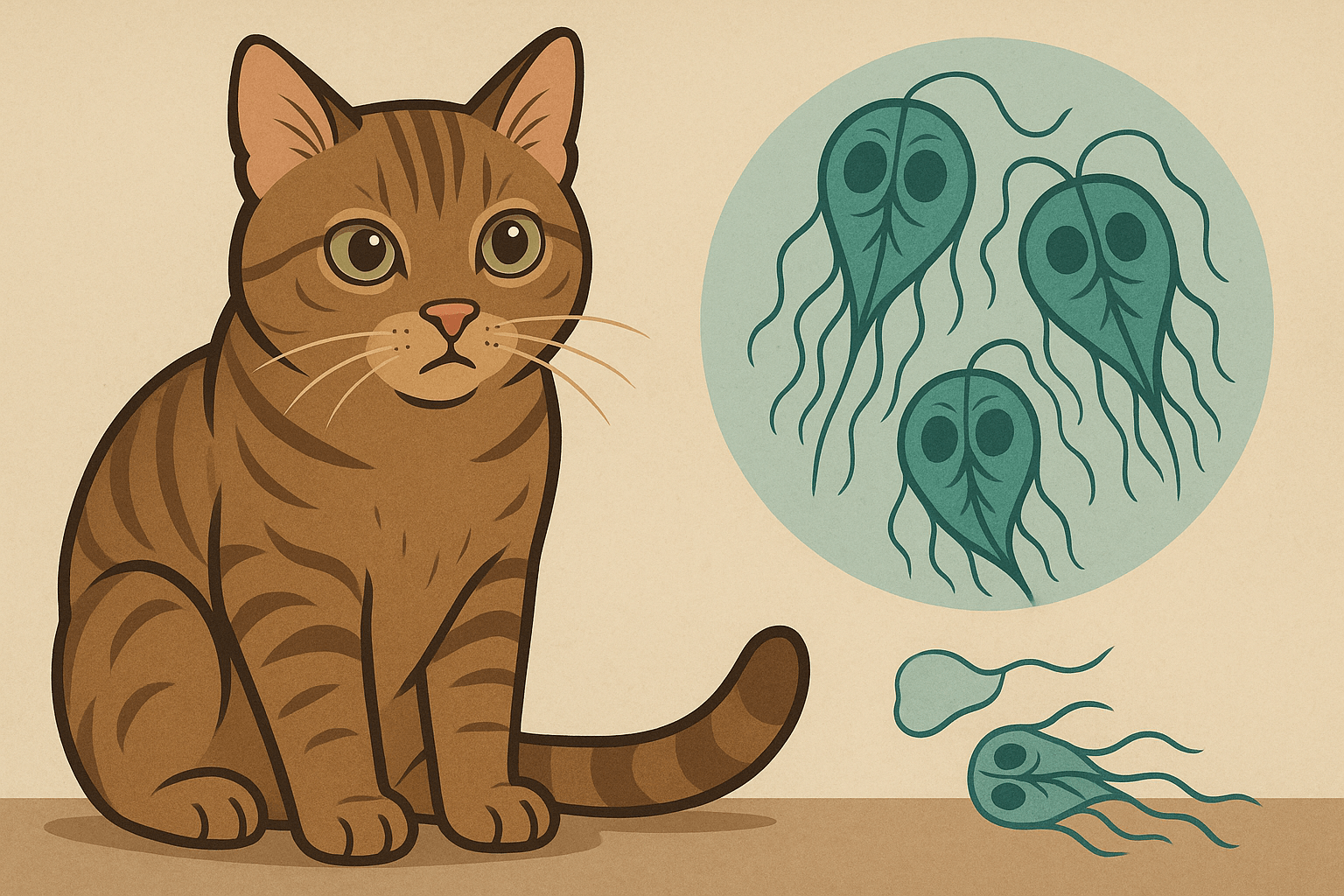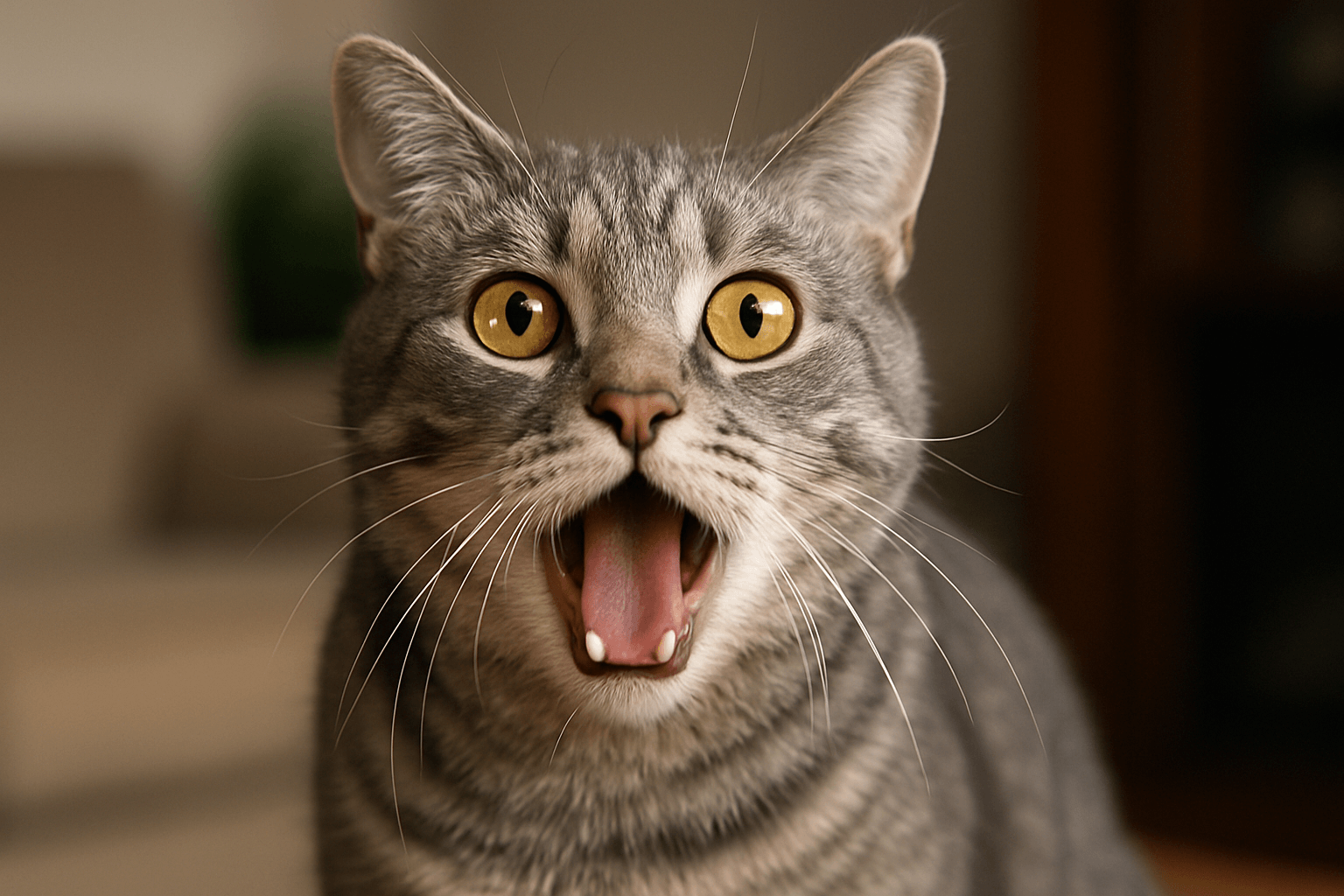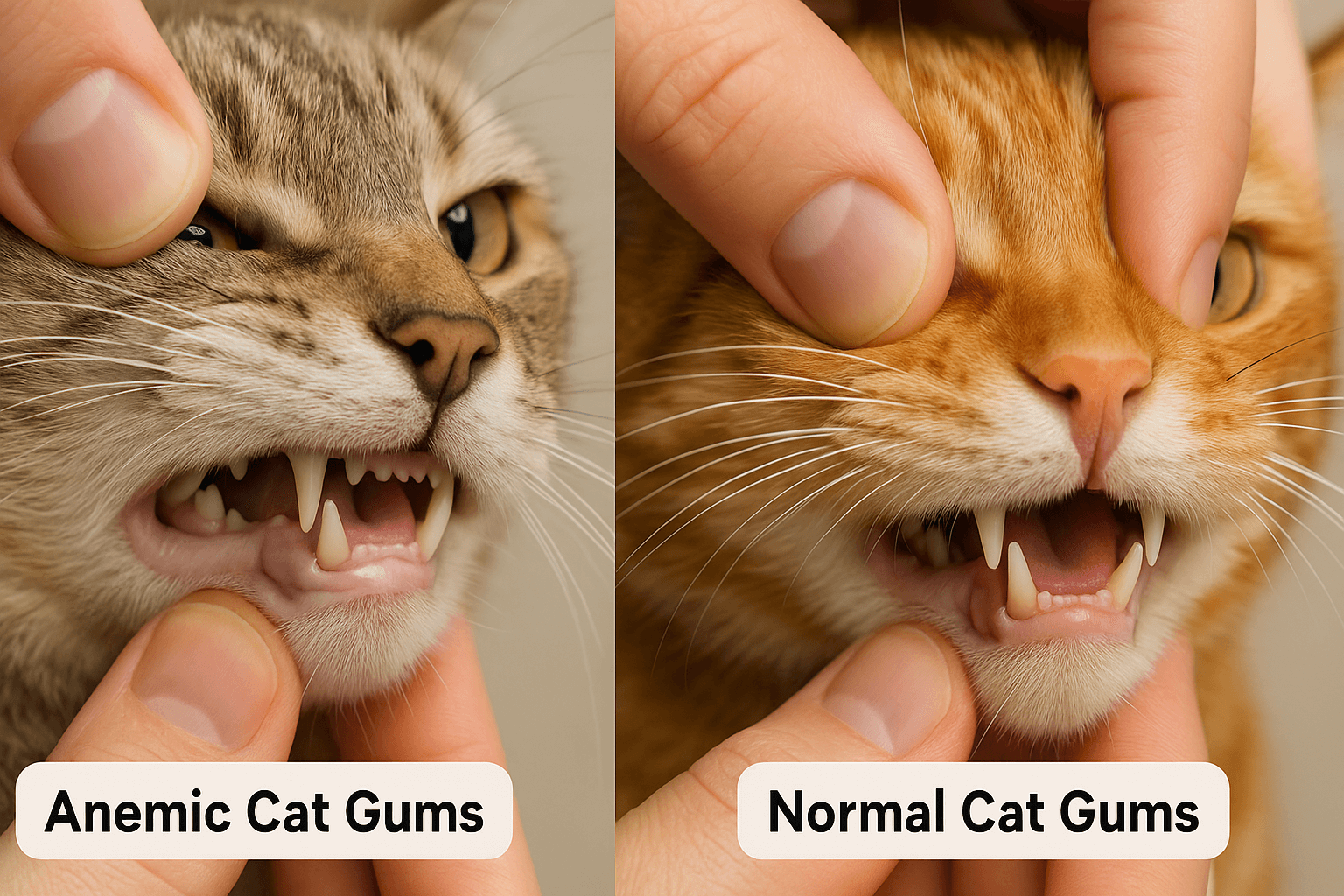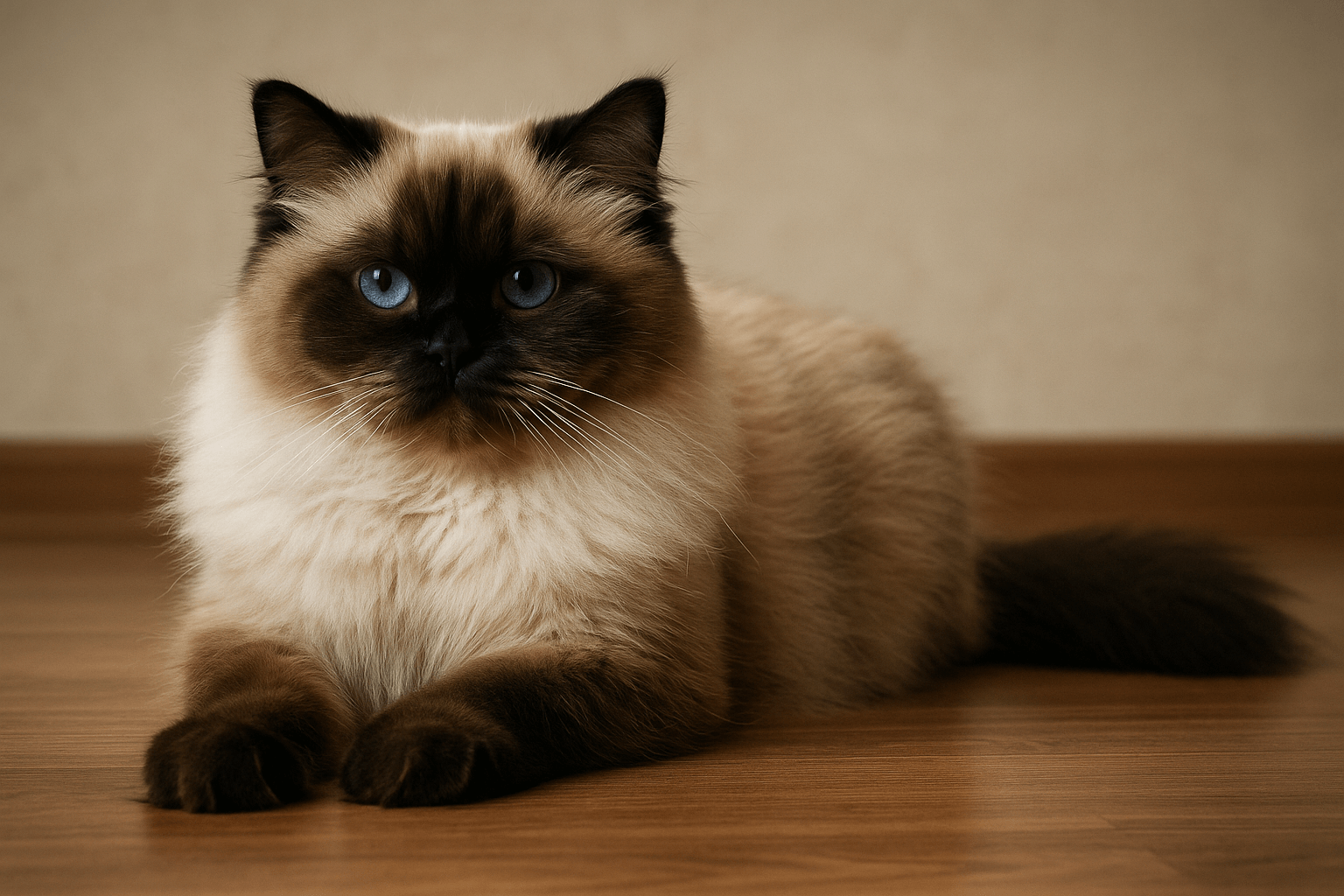Can Cats Eat Kale?
As pet owners become increasingly mindful of their cats’ diets, many wonder whether human foods like kale are safe for their feline companions. Kale, a nutrient-rich leafy green, is often praised for its health benefits in humans—but does the same apply to cats? While cats are obligate carnivores and thrive on meat-based diets, some vegetables can be introduced in moderation as occasional treats. However, not all greens are suitable for cats, and kale comes with both potential benefits and risks. In this blog post, we’ll explore whether cats can eat kale, how it may affect their health, and what precautions you should take before offering it to your furry friend.
Potential Benefits of Feeding Kale to Cats
While kale isn’t a natural part of a cat’s diet, it does contain nutrients that could offer minor benefits when fed sparingly. Here’s what you need to know about the potential upsides of including kale in your cat’s diet.
Rich in Vitamins:
Kale is packed with vitamins A, C, and K, which support immune function, vision, and blood clotting in small amounts.Antioxidant Properties:
Antioxidants in kale may help combat oxidative stress and inflammation, promoting overall well-being.Low in Calories:
As a low-calorie food, kale can serve as a healthy snack without contributing to weight gain.Fiber Content:
The fiber in kale may aid digestion, especially for cats prone to constipation or irregular bowel movements.Hydration Support:
Kale contains water, which can contribute to your cat’s daily fluid intake, helping maintain hydration.
While these benefits exist, they must be balanced against the risks and limitations of feeding kale to cats. Always prioritize moderation and consult your veterinarian before introducing new foods.
Risks and Concerns of Feeding Kale to Cats
Despite its nutritional value, kale poses certain risks to cats that shouldn’t be overlooked. Understanding these concerns is crucial to ensure your cat’s safety and well-being.
High Calcium Oxalate Content:
Kale contains oxalates, which can contribute to urinary tract issues or kidney stones in susceptible cats.Digestive Upset:
Cats have sensitive digestive systems, and kale may cause vomiting, diarrhea, or gas if consumed in large amounts.Nutrient Imbalance:
Overfeeding kale can interfere with your cat’s ability to absorb essential nutrients from their primary diet.Choking Hazard:
Large pieces of kale may pose a choking risk, especially for smaller cats or those who gulp their food.Toxic Additives:
Seasoned or cooked kale with garlic, onions, or spices can be toxic to cats and should always be avoided.
These risks highlight the importance of caution when considering kale as a treat for your cat. Always err on the side of safety.
Check this guide 👉Can Cats Eat Crab? Best 7 Expert Tips!
Check this guide 👉Can Cats Eat Pancakes? Best 7 Expert Tips!
Check this guide 👉Can Cats Eat Bell Peppers? Best 7 Expert Tips!
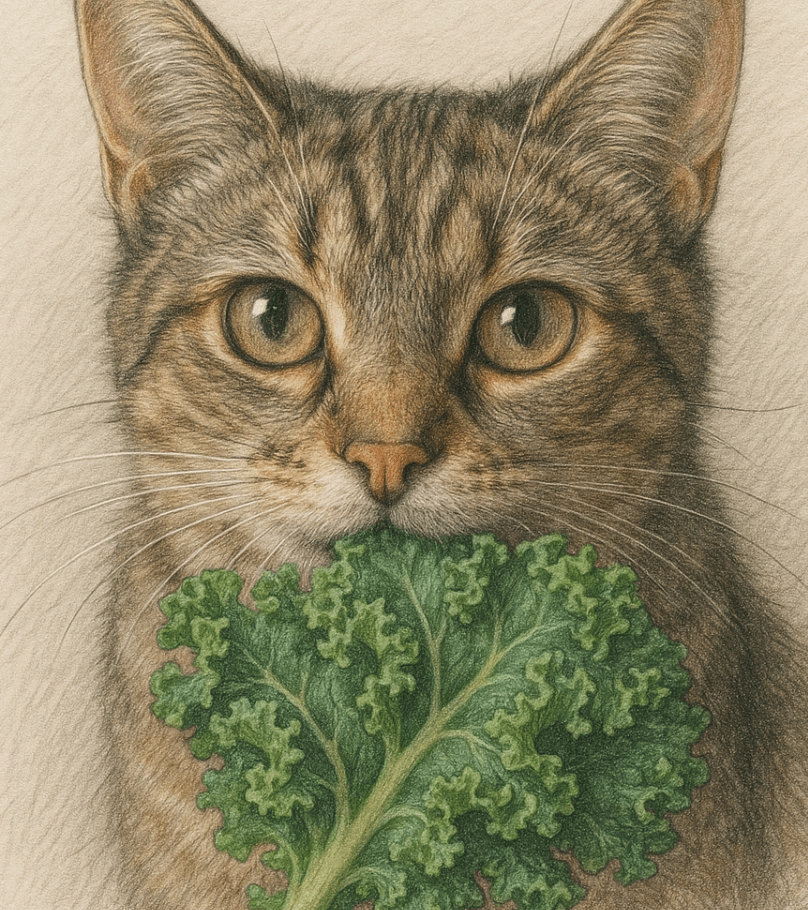
Safe Alternatives to Kale | Foods to Avoid Completely |
|---|---|
Steamed carrots (plain) | Onions, garlic, and chives |
Plain pumpkin (unsweetened) | Grapes and raisins |
Small amounts of spinach | Chocolate |
Blueberries (in moderation) | Alcohol |
Cooked chicken (unseasoned) | Raw dough and yeast |
How to Safely Introduce Kale to Your Cat
If you decide to offer kale to your cat, it’s essential to do so carefully and in moderation. Follow these guidelines to minimize risks and ensure a positive experience.
Start with Small Portions:
Begin by offering a tiny piece of kale to see how your cat reacts. Observe for any signs of digestive upset or discomfort.Serve Plain and Unseasoned:
Avoid adding salt, oil, or spices, as these can irritate your cat’s stomach or even be toxic.Choose Fresh Over Cooked:
Fresh kale is easier for cats to digest compared to cooked versions, which may lose nutrients or contain additives.Chop into Bite-Sized Pieces:
Cutting kale into small, manageable pieces reduces the risk of choking and makes it easier for your cat to eat.Monitor for Allergic Reactions:
Watch for symptoms like itching, swelling, or difficulty breathing, which may indicate an allergic reaction.
By following these steps, you can safely determine whether kale is a suitable treat for your cat.
Signs Your Cat May Not Tolerate Kale
Even if you take precautions, some cats simply can’t tolerate kale due to individual sensitivities or underlying health conditions. Look out for these warning signs after introducing kale to your cat’s diet.
Vomiting or Diarrhea:
These symptoms suggest that kale is upsetting your cat’s digestive system and should be avoided in the future.Decreased Appetite:
If your cat refuses to eat or shows disinterest in their regular meals, kale may be causing discomfort.Lethargy or Weakness:
A sudden lack of energy could indicate an adverse reaction to kale or other dietary changes.Urinary Issues:
Frequent urination, straining, or blood in urine may signal kidney or bladder problems triggered by kale consumption.Excessive Drooling:
Drooling is often a sign of nausea or irritation caused by consuming something unsuitable.
Recognizing these signs early allows you to intervene promptly and prevent further complications.
Common Mistakes to Avoid When Feeding Kale to Cats
Feeding kale to your cat requires careful consideration to avoid mistakes that could harm their health. Here are some pitfalls to watch out for.
Overfeeding Kale:
Even small amounts can upset a cat’s stomach; overfeeding increases the risk of digestive issues significantly.Adding Harmful Ingredients:
Never season kale with garlic, onion powder, or spices, as these are toxic to cats.Ignoring Underlying Health Conditions:
Cats with kidney or urinary issues are more vulnerable to the effects of kale’s high oxalate content.Forcing Your Cat to Eat Kale:
If your cat refuses kale, don’t force them to eat it—they instinctively know what’s best for their bodies.Neglecting Veterinary Advice:
Skipping a professional opinion can lead to unknowingly harming your cat with inappropriate dietary choices.
Avoiding these mistakes ensures a safer and healthier experience for your cat.
Alternatives That Offer Similar Nutritional Benefits
If you’re hesitant about feeding kale, there are plenty of alternatives that provide similar nutritional benefits without the associated risks.
Plain Pumpkin Puree:
Rich in fiber, pumpkin supports digestive health and helps regulate bowel movements in cats.Steamed Carrots:
Low in calories and high in vitamins, steamed carrots make a safe and nutritious treat.Small Amounts of Spinach:
Like kale, spinach contains vitamins and antioxidants but should still be given in moderation.Blueberries (Occasionally):
These antioxidant-rich fruits are safe in small quantities and can satisfy your cat’s curiosity about snacks.Edible Cat Grass:
Specially grown cat grass provides fiber and aids digestion without posing any risks.
These alternatives allow you to cater to your cat’s instincts while keeping them safe.
Understanding Your Cat’s Natural Dietary Instincts
Cats are obligate carnivores, meaning their bodies are designed to thrive on meat-based diets. Understanding their instincts helps explain why kale and other greens aren’t a natural fit for their nutritional needs.
Meat-Based Nutrition:
Cats require taurine, an amino acid found primarily in animal proteins, which is essential for heart and eye health.Limited Ability to Process Plants:
Unlike omnivores, cats lack the enzymes needed to fully digest plant matter, making vegetables less efficient as a food source.Instinctual Food Preferences:
Cats naturally gravitate toward prey-like foods, such as meat and fish, rather than leafy greens.Hydration Through Food:
Wild cats obtain most of their moisture from their prey, highlighting the importance of wet food over dry kibble.Curiosity vs. Necessity:
While cats may nibble on plants out of curiosity, it doesn’t mean they derive significant nutritional value from them.
By recognizing these instincts, you can better tailor your cat’s diet to meet their unique needs.
Frequently Asked Questions About Cats and Kale
Is kale toxic to cats?
Kale isn’t inherently toxic, but its high oxalate content can lead to urinary issues in some cats.
Can kittens eat kale?
Kittens have delicate digestive systems, so it’s best to avoid kale and stick to species-appropriate kitten food.
How much kale can I give my cat?
Limit kale to a very small amount, no more than a teaspoon-sized piece, and only occasionally.
What should I do if my cat eats too much kale?
Contact your veterinarian immediately if your cat shows signs of illness after consuming kale.
Are there safer vegetables for cats?
Yes, options like plain pumpkin, steamed carrots, and small amounts of spinach are generally safer alternatives.
Prioritizing Your Cat’s Health When It Comes to Kale
While kale isn’t outright toxic to cats, it’s not a necessary or ideal addition to their diet. Cats are obligate carnivores, meaning their nutritional needs are best met through meat-based sources rather than plant-based foods. If you choose to offer kale, do so sparingly and with caution, always prioritizing your cat’s safety and comfort. By understanding the potential risks and benefits, monitoring your cat’s reactions, and consulting your veterinarian, you can ensure that your feline friend enjoys a balanced and healthy diet. Remember, your cat depends on you to make the best choices for their well-being—so always put their health first.
Giardia in Cats: Best 7 Expert Tips! Discover expert advice on identifying, treating, and preventing giardia in cats to ensure your feline stays happy and healthy.
Cat Hyperventilating: Best 7 Expert Tips! Discover signs, causes, and solutions for cat hyperventilation. Learn how to calm your cat and when to seek veterinary care for their breathing issues.
Anemic Cat Gums vs Normal: Best 7 Expert Tips! Learn to spot signs of anemia in cats, understand gum health, and ensure your feline stays happy and healthy with expert advice.
Himalayan Cat Size: Best 7 Expert Tips! Discover expert advice on Himalayan cat size, growth factors, care tips, and how to ensure your feline stays healthy and happy.

